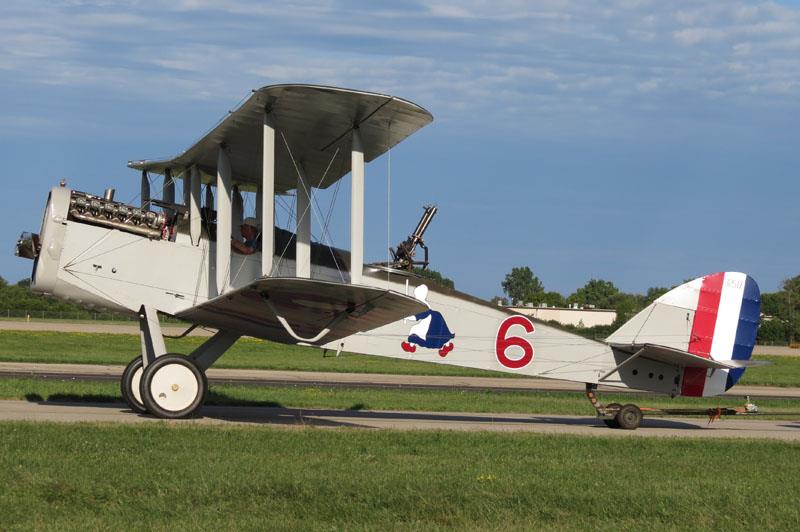Airco DH.4 was a two-seat biplane used in World War I. It was designed by Geoffrey de Havilland and was the first British two-seat light bomber to have an effective defensive weapon. The aircraft performed both aerial reconnaissance and day bombers missions. Most of the Airco DH.4 aircraft were produced to serve the American expeditionary forces that were being deployed to fight in France.

The Airco DH.4 aircraft was designed by Geoffrey de Havilland as a light two-seat fighter aircraft to perform both aerial reconnaissance and day bomber missions.
In August 1916, the Airco DH.4 prototype aircraft made its first flight with a prototype BHP engine of 230 horsepower.
During the summer of 1916, the second prototype of Airco DH.4 equipped with Rolls-Royce engines made its first flight.
By the end of 1916, the first order for 50 DH.4 units, powered by a 250 horsepower (186 kW) Eagle III engine, was received from RFC.
The production of DH.4 aircraft was carried out by companies beyond Airco including: FW Berwick and Co, Glendower Aircraft Company, Autocars Palladi, Vulcan Motor and Engineering, and Westland Airplane Work.
A total of 6,295 aircraft were produced, of which 4,846 were built in the United States.
Airco DH.4 airliner was put into use in the British and US militaries.
After the First World War ended, DH.4 and DH.4A aircraft were put into civil use.
On 25 August, 1919, Aircraft Transport and Travel Limited was the first British commercial airline to fly from Hounslow Heath to Paris Le Bourget.
Aircraft Transport and Travel Limited used this aircraft until it ceased operations in 1920.
Handley Page Transport and SNETA continued operating DH.4 until 1921.
Also, the DH.4 aircraft were used by Australian airline QANTAS and made its first flight in 1922.
Instone Air Lines used the DH.4 until its merger into Imperial Airways in 1924.
The DH.4 aircraft continued to be operated in the Post Office service until 1927.
- Cockpit crew: two
- Length: 30 ft 8 in (9.35 m)
- Wingspan: 43 ft 4 in (13.21 m)
- Height: 11 ft 0 in (3.35 m)
- Wing area: 434 sq ft (40.3 m2)
- Empty weight: 2.387 lb (1.083 kg)
- Weight: 3.472 lb (1.575 kg)
- Powerplant: 1 × Rolls-Royce Eagle VIII water-cooled V12 engine, 375 hp (280 kW)
- Maximum speed: 143 mph (230 km / h; 124 kn) at sea level
- Endurance: 3 hour 45 minutes
- Service ceiling: 22,000 ft (6,700 m)
- Time to altitude: 9 minutes to 10,000 ft (3,000 m)
- Guns: Forward-firing .303 in (7.7 mm) Vickers machine gun, Lewis gun on Scarff ring at rear
- Bomb: 460 lb (210 kg) bombs
